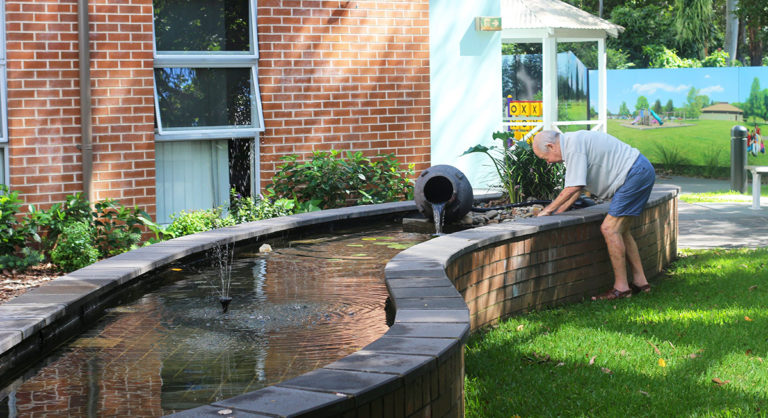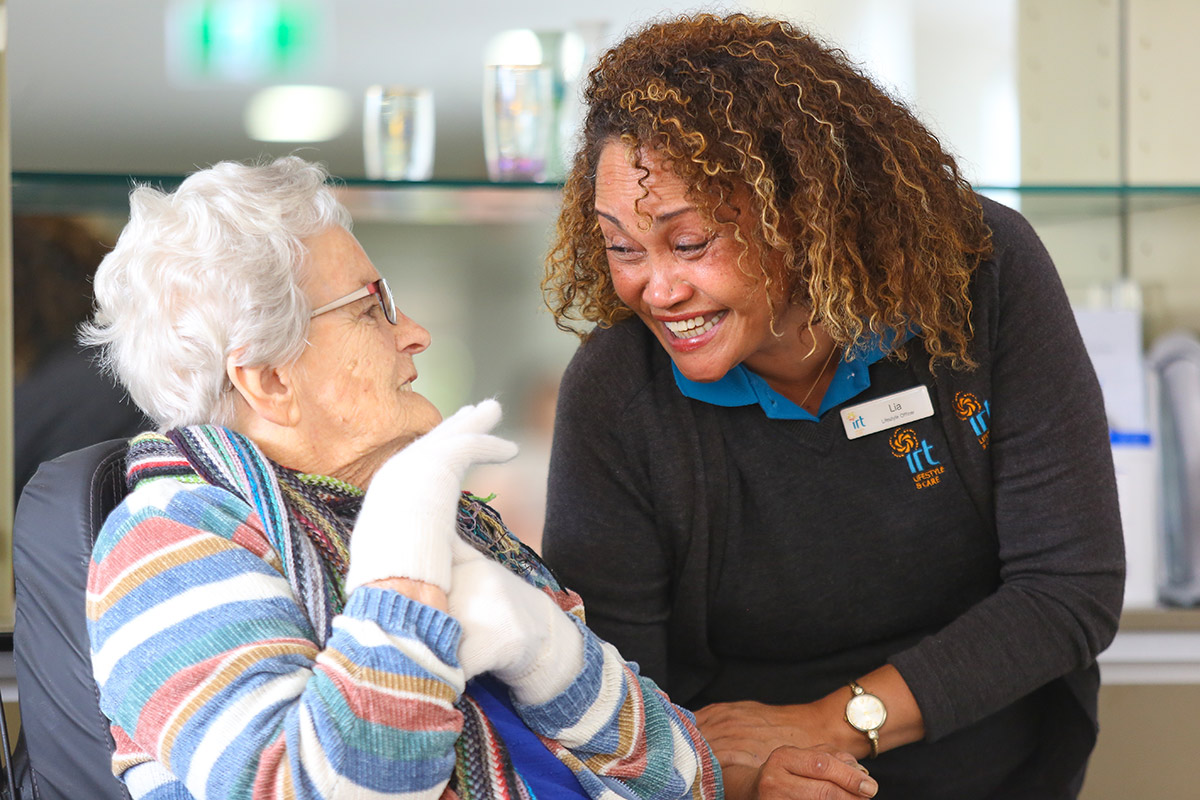Namaste, a Hindu term for honouring the spirit within, incorporates sensory-based care with meaningful activities to achieve comfort and quality of life. IRT has adopted its Namaste program as a core pillar in supporting residents who can no longer participate in traditional activities or are facing end-stage dementia.
Trained staff integrate sensory stimulation into care delivery using therapeutic touch, aromatherapy, music and sensory experiences. Activities are tailored for each resident and generally include special momentos from their life. Family and friends are encouraged to participate, as Namaste often enables a sense of connection at a time when communication with loved ones is limited.
Founded on the power of loving touch, some of the benefits of our Namaste program include; a relaxed and fulfilling environment, reduced need for medication, decreased pain, fewer incidents of aggression, increased social interaction, a holistic approach that includes physical and emotional health and a positive impact on quality of life. Core services include:
- Sensory stimulation
IRT’s Namaste care experience incorporates stimulation of the five senses (touch, hearing, sight, smell, taste). Music, colour, therapeutic touch and massage, aromatherapy oils and food treats are all part of the multi-sensory environment created in Namaste. - Meaningful activity
Activities are tailored for each resident to create opportunities for loving touch and human connection. Hands and face may be gently washed with a warm flannel, patted dry with a soft towel and moisturising cream applied. Staff use opportunities like this to make eye contact with residents and speak to them with warmth and kindness. - Life story and family participation
Family and friends are invited to join in the Namaste care experience and share stories from their loved one’s past. We often create a personalised box of special mementos to incorporate into the care experience. Residents are encouraged to hold these items and may be immersed in familiar sounds and smells to promote comfort and wellbeing. - Group sessions
Namaste session are delivered by specially-trained staff in small groups or one-on-one in a calm space away from distractions and daily activities. Small groups are run in dedicated Namaste rooms featuring soft lighting and engaging design elements supported by music, aromatherapy and
temperature control. - Pain management, warmth and hydration
Specially-trained staff ensure that residents are comfortable and well hydrated throughout the session. Blankets and socks keep residents warm and cosy in between activities, like foot massages. This helps residents to relax into the sensory-care experience.
Read more about Namaste at IRT here.



